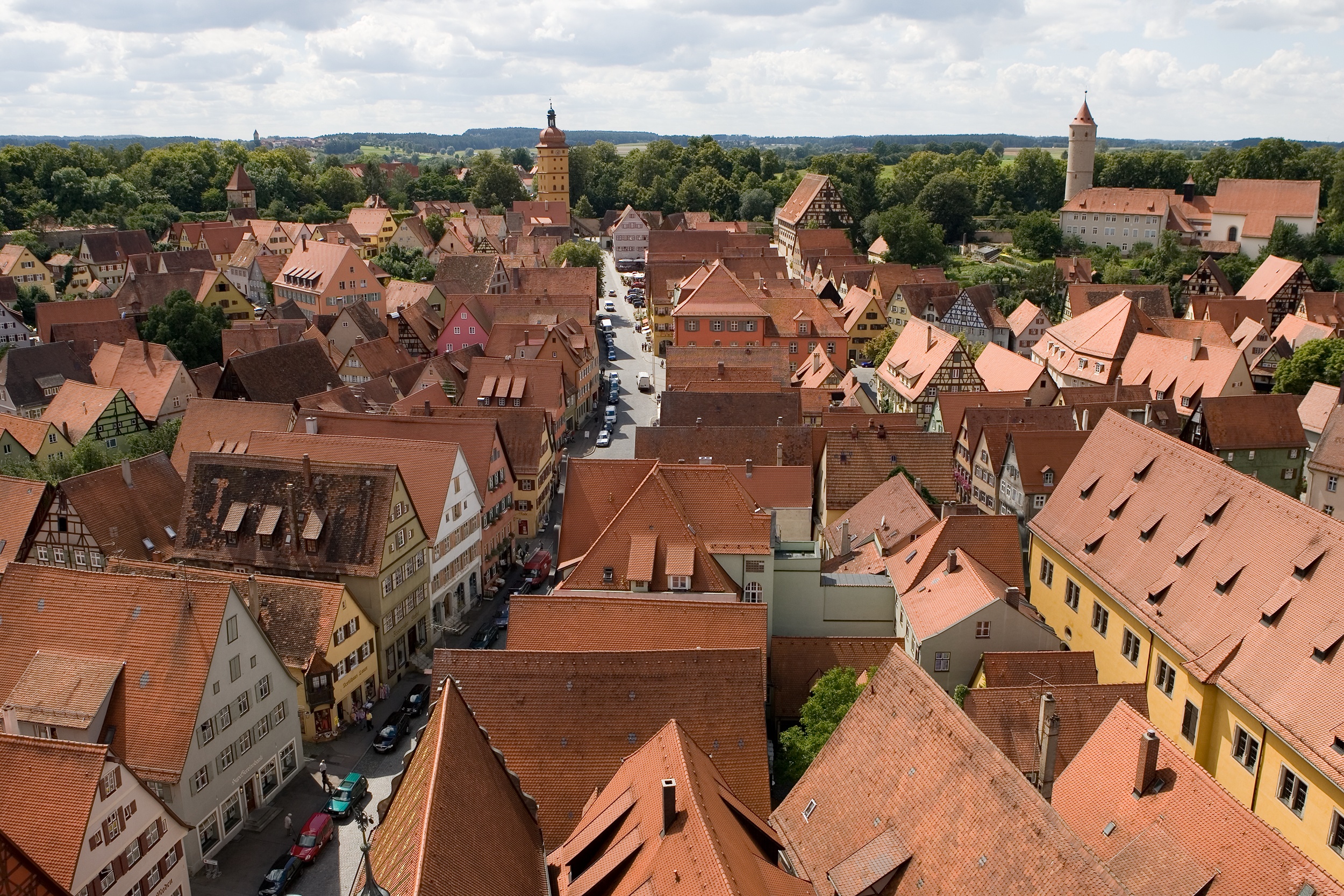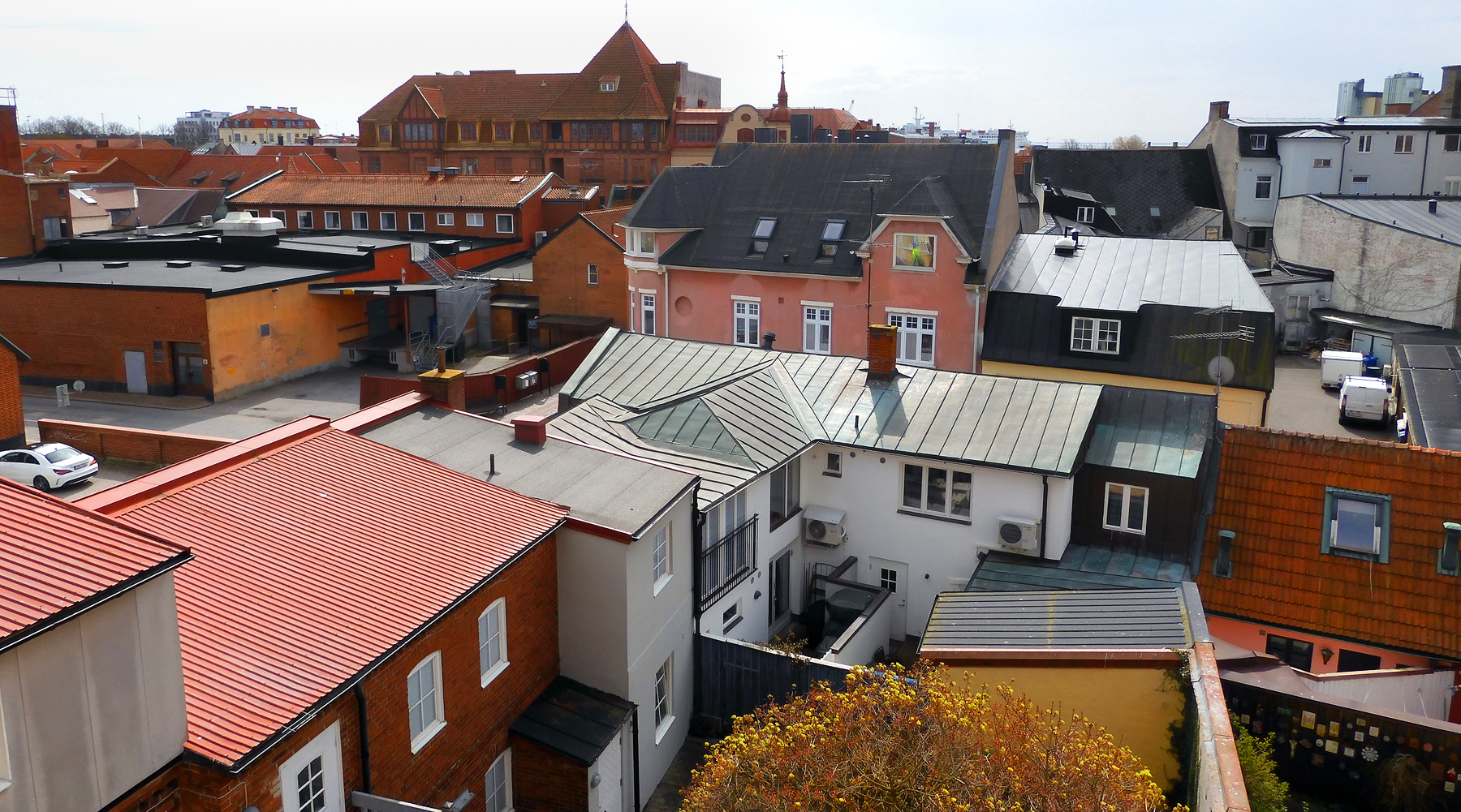|
Roofer
A roofer, roof mechanic, or roofing contractor is a tradesman who specializes in roof construction. Roofers replace, repair, and install the roofs of buildings, using a variety of materials, including shingles, single-ply, bitumen, and metal. Roofing work includes the hoisting, storage, application, and removal of roofing materials and equipment, including related insulation, sheet metal, vapor barrier work, and green technologies rooftop jobs such as vegetative roofs, rainwater harvesting systems, and photovoltaic products, such as solar shingles and solar tiles. Roofing work can be physically demanding because it may involve heavy lifting, climbing, bending, and kneeling, often in extreme weather conditions. Roofers are also vulnerable to falls from heights due to working at elevated heights. Various protective measures are required in many countries. In the United States these requirement are established by the Occupational Safety and Health Administration (OSHA) to add ... [...More Info...] [...Related Items...] OR: [Wikipedia] [Google] [Baidu] |
Flat Roof
A flat roof is a roof which is almost level in contrast to the many types of List of roof shapes, sloped roofs. The slope of a roof is properly known as its Roof pitch, pitch and flat roofs have up to approximately 10°. Flat roofs are an ancient form mostly used in arid climates and allow the roof space to be used as a living space or a Green roof, living roof. Flat roofs, or "low-slope" roofs, are also commonly found on commercial buildings throughout the world. The U.S.-based National Roofing Contractors Association defines a low-slope roof as having a slope of 3 in 12 (1:4) or less. Flat roofs exist all over the world, and each area has its own tradition or preference for materials used. In warmer climates, where there is less rainfall and freezing is unlikely to occur, many flat roofs are simply built of masonry or concrete and this is good at keeping out the heat of the sun and cheap and easy to build where timber is not readily available. In areas where the roof could be ... [...More Info...] [...Related Items...] OR: [Wikipedia] [Google] [Baidu] |
Roof Shingle
A roof’s shingles are a roof covering consisting of individual overlapping elements. These elements are typically flat, rectangular shapes laid in courses from the bottom edge of the roof up, with each successive course overlapping the joints below. Shingles are held by the roof rafters and are made of various materials such as wood, slate, flagstone, architectural metals, metal, plastic, and composite materials such as fibre cement and asphalt shingles. Ceramic roof tiles, which still dominate in Europe and some parts of Asia, are still usually called tiles. Roof shingles may deteriorate faster and need to repel more water than wall shingles. They are a very common roofing material in the United States. Etymology and nomenclature Shingle is a corruption of German meaning a roofing slate."Shingle" ... [...More Info...] [...Related Items...] OR: [Wikipedia] [Google] [Baidu] |
Roof Tiles
Roof tiles are overlapping tiles designed mainly to keep out precipitation such as rain or snow, and are traditionally made from locally available materials such as clay or slate. Later tiles have been made from materials such as concrete, glass, and plastic. Roof tiles can be affixed by screws or nail (fastener), nails, but in some cases historic designs utilize interlocking systems that are self-supporting. Tiles typically cover an List of commercially available roofing materials, underlayment system, which seals the roof against water intrusion. Categories There are numerous profiles, or patterns, of roof tile, which can be separated into categories based on their installation and design. Shingle / flat tiles One of the simplest designs of roof tile, these are simple overlapping slabs installed in the same manner as traditional roof shingle, shingles, usually held in place by nails or screws at their top. All forms of slate tile fall into this category. When installed, mos ... [...More Info...] [...Related Items...] OR: [Wikipedia] [Google] [Baidu] |
Roof
A roof (: roofs or rooves) is the top covering of a building, including all materials and constructions necessary to support it on the walls of the building or on uprights, providing protection against rain, snow, sunlight, extremes of temperature, and wind. A roof is part of the building envelope. The characteristics of a roof are dependent upon the purpose of the building that it covers, the available roofing materials and the local traditions of construction and wider concepts of architectural design and practice, and may also be governed by local or national legislation. In most countries, a roof protects primarily against rain. A verandah may be roofed with material that protects against sunlight but admits the other elements. The roof of a Conservatory (greenhouse), garden conservatory protects plants from cold, wind, and rain, but admits light. A roof may also provide additional living space, for example, a roof garden. Etymology Old English 'roof, ceiling, top, summ ... [...More Info...] [...Related Items...] OR: [Wikipedia] [Google] [Baidu] |
Bungalow
A bungalow is a small house or cottage that is typically single or one and a half storey, if a smaller upper storey exists it is frequently set in the roof and Roof window, windows that come out from the roof, and may be surrounded by wide verandas. The first house in England that was classified as a bungalow was built in 1869. In the United States, it was initially used as a vacation architecture, and was most popular between 1900 and 1918, especially with the Arts and Crafts movement. The term bungalow is derived from the word and used Ellipsis (linguistics), elliptically to mean "a house in the Architecture of Bengal, Bengal style".''Online Etymology Dictionary'', "bungalow"Online Etymology Dictionary/ref> Design considerations Bungalows are very convenient for the homeowner in that all living areas are on a single storey and there are no stairs between living areas. A bungalow is well suited to persons with impaired mobility, such as the elderly or those using wheel ... [...More Info...] [...Related Items...] OR: [Wikipedia] [Google] [Baidu] |
Corrugated Galvanized Iron
Corrugated galvanised iron (CGI) or steel, colloquially corrugated iron (near universal), wriggly tin (taken from UK military slang), pailing (in Caribbean English), corrugated sheet metal (in North America), zinc (in Cyprus and Nigeria) or custom orb / corro sheet (Australia), is a building material composed of sheets of hot-dip galvanised mild steel, cold-rolled to produce a linear ridged pattern in them. Although it is still popularly called "iron" in the UK, the material used is actually steel (which is iron alloyed with carbon for strength, commonly 0.3% carbon), and only the surviving vintage sheets may actually be made up of 100% iron. The corrugations increase the bending strength of the sheet in the direction perpendicular to the corrugations, but not parallel to them, because the steel must be stretched to bend perpendicular to the corrugations. Normally each sheet is manufactured longer in its strong direction. CGI is lightweight and easily transported. It was ... [...More Info...] [...Related Items...] OR: [Wikipedia] [Google] [Baidu] |
EPDM Rubber
EPDM rubber (ethylene propylene diene monomer rubber) is a type of synthetic rubber that is used in many applications. EPDM is an M-Class rubber under ASTM standard D-1418; the ''M'' class comprises elastomers with a saturated polyethylene chain (the M deriving from the more correct term polymethylene). EPDM is made from ethylene, propylene, and a diene comonomer that enables crosslinking via sulfur vulcanization. Typically used dienes in the manufacture of EPDM rubbers are ethylidene norbornene (ENB), dicyclopentadiene (DCPD), and vinyl norbornene (VNB). Varying diene contents are reported in commercial products, which are generally in the range from 2 to 12%. The earlier relative of EPDM is EPR, ethylene propylene rubber (useful for high-voltage electrical cables), which is not derived from any diene precursors and can be crosslinked only using radical methods such as peroxides. As with most rubbers, EPDM as used is always compounded with fillers such as carbon black and ... [...More Info...] [...Related Items...] OR: [Wikipedia] [Google] [Baidu] |
Polyvinyl Chloride
Polyvinyl chloride (alternatively: poly(vinyl chloride), colloquial: vinyl or polyvinyl; abbreviated: PVC) is the world's third-most widely produced synthetic polymer of plastic (after polyethylene and polypropylene). About 40 million tons of PVC are produced each year. PVC comes in rigid (sometimes abbreviated as RPVC) and flexible forms. Rigid PVC is used in construction for pipes, doors and windows. It is also used in making plastic bottles, packaging, and bank or membership cards. Adding plasticizers makes PVC softer and more flexible. It is used in plumbing, electrical cable insulation, flooring, signage, phonograph records, inflatable products, and in rubber substitutes. With cotton or linen, it is used in the production of canvas. Polyvinyl chloride is a white, brittle solid. It is soluble in ketones, chlorinated solvents, dimethylformamide, THF and DMAc. Discovery PVC was synthesized in 1872 by German chemist Eugen Baumann after extended investigation and experimenta ... [...More Info...] [...Related Items...] OR: [Wikipedia] [Google] [Baidu] |
Occupational Safety And Health Administration
The Occupational Safety and Health Administration (OSHA; ) is a regulatory agency of the United States Department of Labor that originally had federal visitorial powers to inspect and examine workplaces. The United States Congress established the agency under the Occupational Safety and Health Act (OSH Act), which President Richard Nixon, Richard M. Nixon signed into law on December 29, 1970. OSHA's mission is to "assure safe and healthy working conditions for working men and women by setting and enforcing standards and by providing training, outreach, education, and assistance." The agency is also charged with enforcing a variety of whistleblower statutes and regulations. OSHA's workplace safety inspections have been shown to reduce injury rates and injury costs without adverse effects on employment, sales, credit ratings, or firm survival. History The Bureau of Labor Standards of the Department of Labor has worked on some work safety issues since its creation in 1934. Economi ... [...More Info...] [...Related Items...] OR: [Wikipedia] [Google] [Baidu] |
Thermoplastic Olefin
Thermoplastic olefin, thermoplastic polyolefin (TPO), or olefinic thermoplastic elastomers refer to polymer/filler blends usually consisting of some fraction of a thermoplastic, an elastomer or rubber, and usually a filler. Outdoor applications such as roofing frequently contain TPO because it does not degrade under solar UV radiation, a common problem with nylons. TPO is used extensively in the automotive industry. Materials Thermoplastics Thermoplastics may include polypropylene (PP), polyethylene (PE), block copolymer polypropylene (BCPP), and others. Fillers Common fillers include, though are not restricted to talc, fiberglass, carbon fiber, wollastonite, and MOS (Metal Oxy Sulfate). Elastomers Common elastomers include ethylene propylene rubber (EPR), EPDM (EP-diene rubber), ethylene-octene (EO), ethylbenzene (EB), and styrene ethylene butadiene styrene (SEBS). Currently there are a great variety of commercially available rubbers and BCPP's. They are produced u ... [...More Info...] [...Related Items...] OR: [Wikipedia] [Google] [Baidu] |
List Of Commercially Available Roofing Material
Roofing material is the outermost layer on the roof of a building, sometimes self-supporting, but generally supported by an underlying structure. A building's roofing material provides shelter from the natural elements. The outer layer of a roof shows great variation dependent upon availability of material, and the nature of the supporting structure. Those types of roofing material which are commercially available range from natural products such as thatch and slate to commercially produced products such as tiles and polycarbonate sheeting. Roofing materials may be placed on top of a secondary water-resistant material called underlayment. Steep slope roofing materials Steep roof materials are roofs that are only recommended where water can freely and openly drain off the edge of the roof without retaining water for too long. The aim is to drain off water completely due to the high water permeability of most of these materials, for instance: the Thatched roofs. In areas where the I ... [...More Info...] [...Related Items...] OR: [Wikipedia] [Google] [Baidu] |







